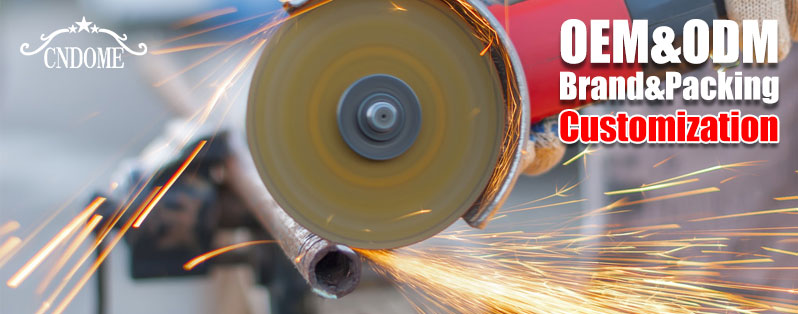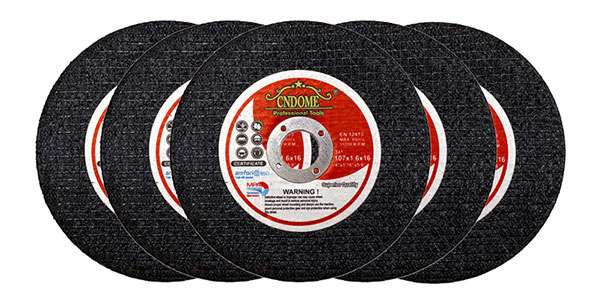When it comes to cutting through tough materials like metal, concrete, and stone, abrasive cut-off discs are indispensable tools. They provide a quick, efficient way to make precise cuts with minimal effort. But choosing the right abrasive cut-off disc for a specific job can be tricky. In this blog, we’ll break down everything you need to know about these essential cutting tools.
What is an Abrasive Cut-Off Disc?
An abrasive cut-off disc, also known as a cutting wheel, is a circular disc typically used with an angle grinder or a chop saw. The disc is made of abrasive grains (often aluminum oxide, silicon carbide, or diamond), which are bonded together to form a solid wheel. These grains cut through materials as the wheel rotates at high speed, efficiently slicing through various hard surfaces.
Types of Abrasive Cut-Off Discs
Not all abrasive cut-off discs are the same. Different materials, thicknesses, and cutting applications require specific types of discs. The most common types include:
- Metal Cut-Off Discs
These are designed for cutting through ferrous and non-ferrous metals such as steel, stainless steel, and aluminum. They are typically made with aluminum oxide as the abrasive material. - Inox Cut-Off Discs
Inox cut-off discs are ideal for cutting stainless steel (also called inox steel). These discs are made with specialized bonding agents that prevent contamination of the metal, ensuring cleaner cuts without discoloration or oxidation. - Tile and Concrete Cut-Off Discs
When cutting through harder materials like ceramic tile, concrete, and masonry, a diamond-bladed disc is typically used. These discs are designed to handle abrasive materials and maintain sharpness over extended use. - Wood and Plastic Cut-Off Discs
While less common, there are specialized abrasive discs designed for cutting wood and plastic. These are typically made with softer abrasive grains and feature a less aggressive bond to prevent the disc from clogging.
Choosing the Right Abrasive Cut-Off Disc
Selecting the right abrasive cut-off disc is essential for getting the best results while ensuring safety. Here are some factors to consider:
- Material Type
Make sure to choose a disc designed for the material you’re cutting. Using a metal-cutting disc on concrete or tile, for example, would not only be inefficient but also dangerous. - Disc Size
Cut-off discs come in various sizes, typically ranging from 3 inches to 9 inches in diameter. The size you need depends on the tool you’re using and the depth of cut required. For most handheld angle grinders, 4.5-inch discs are common, but larger cutting jobs may require bigger discs. - Grit Size
The grit of the disc determines its cutting speed and finish. Finer grits (higher numbers) produce smoother cuts, while coarser grits (lower numbers) cut faster but leave rougher edges. If precision is crucial, opt for finer grit, but for quick cuts, go with a coarser one. - Cutting Speed and Thickness
The cutting speed (measured in RPM) and the thickness of the disc play a big role in performance. Thicker discs last longer but may require more power to cut through the material. Conversely, thinner discs cut faster and require less power but may wear out quickly.
Benefits of Using Abrasive Cut-Off Discs
- Versatility
Abrasive cut-off discs are incredibly versatile. They can be used on a variety of materials, including metals, plastics, tiles, and concrete. This versatility makes them a go-to tool for construction workers, metal fabricators, and DIY enthusiasts. - Efficiency
The high-speed rotation of abrasive cut-off discs allows for fast, efficient cutting. This is ideal for time-sensitive projects or industrial settings where speed is paramount. - Precision
When used correctly, abrasive cut-off discs can make clean, accurate cuts. This is especially important in metalworking and fabrication, where precision is essential. - Cost-Effective
Compared to other cutting methods, abrasive cut-off discs are relatively inexpensive. They offer a quick return on investment, especially for small and medium-scale projects. - Availability
These discs are widely available in hardware stores, online retailers, and industrial supply shops, making them easy to find whenever needed.
Safety Tips When Using Abrasive Cut-Off Discs
As with any power tool, safety should be a top priority when using abrasive cut-off discs:
- Wear Protective Gear: Always wear safety goggles, gloves, and ear protection. The high-speed operation of these discs generates sparks and debris that could be hazardous.
- Check Disc Compatibility: Ensure the disc is compatible with your tool in terms of size, speed, and type.
- Avoid Overheating: Take breaks during extended cutting sessions to prevent the disc from overheating, which can lead to premature wear or even breakage.
- Proper Handling: Always hold the grinder with both hands and maintain a firm grip to avoid any loss of control.
Conclusion
Abrasive cut-off discs are an essential tool for anyone involved in construction, metalworking, or DIY projects. By understanding the different types, choosing the right disc for your material, and following safety precautions, you can maximize the performance and lifespan of your tools. Whether you’re cutting through metal, tile, or even stone, an abrasive cut-off disc can make the job faster, easier, and more precise.


